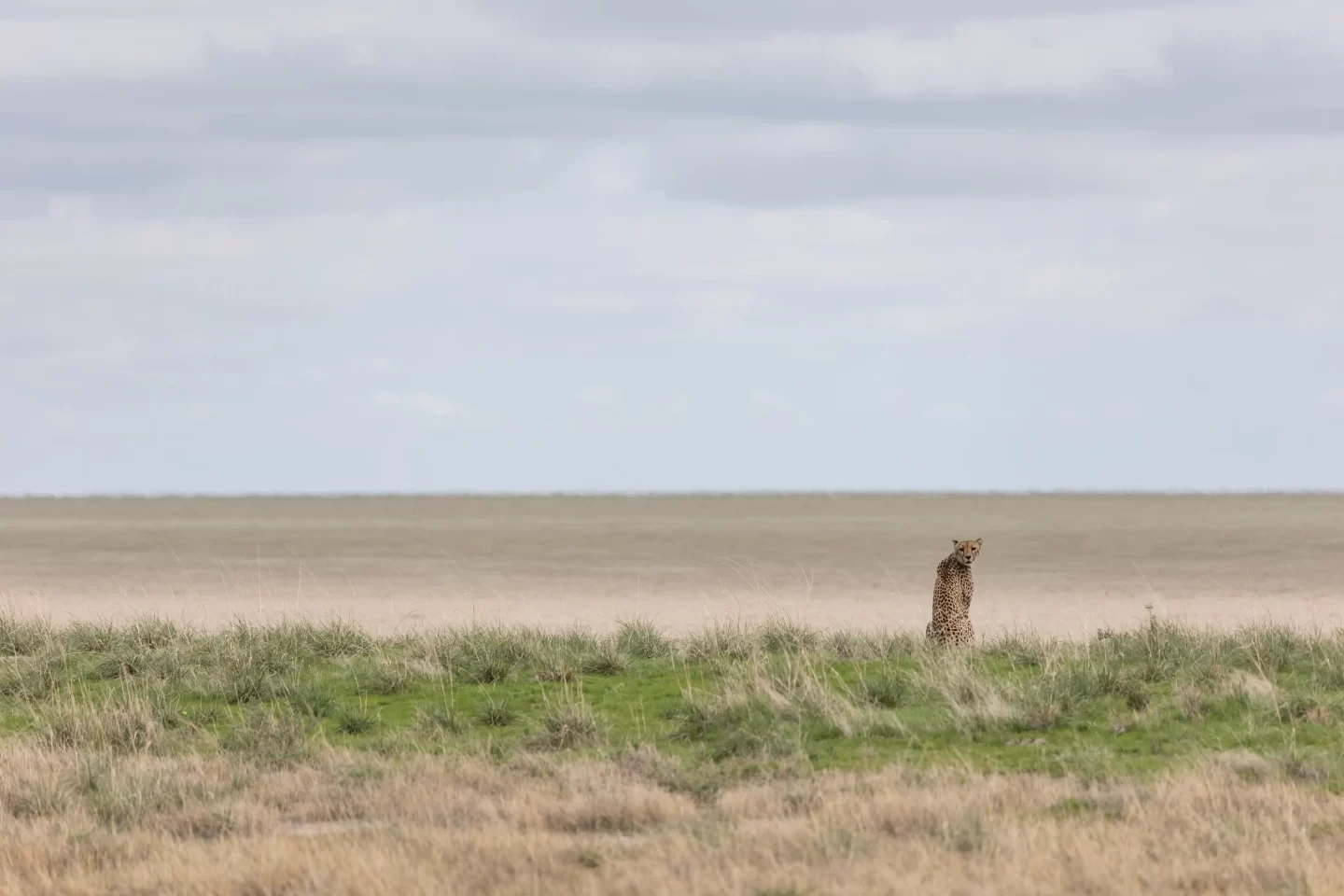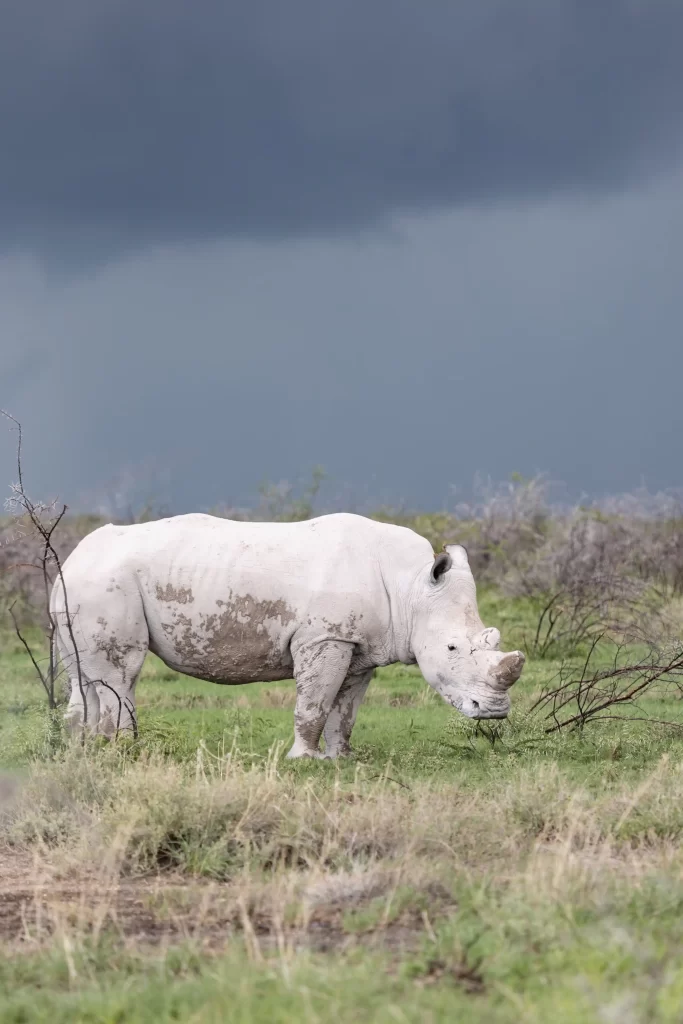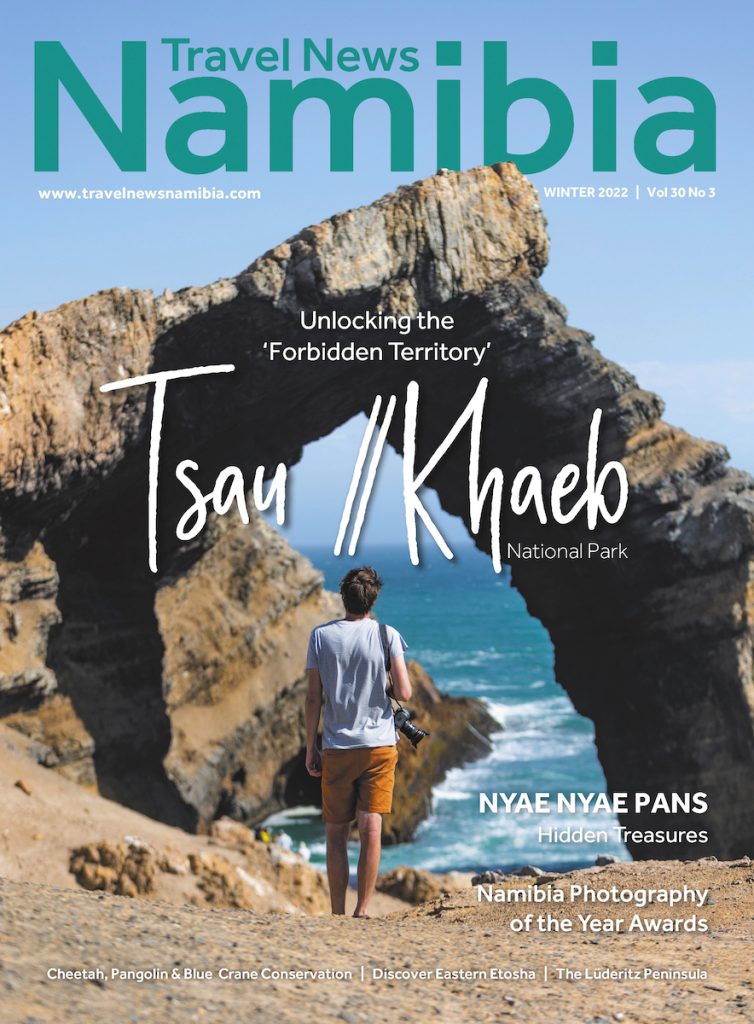

Along the eastern edge of The Great White Place
Text & Photographs Elzanne McCulloch
From the Winter 2022 issue
We have gotten into the habit of favouring Anderson’s Gate to enter Etosha National Park. It is the “central” gate on the southern boundary of the park near Okaukuejo. I am not sure why or how it happened, but habit is one of the most prolific of human behaviours.
When the Western part of Etosha was opened some years ago, its wild and unreaped bushlands called me. So then, from Okaukuejo we headed north to Okondeka and then west. Habit. The furthest east we would wander was our favourite campsite at Halali. Spending a night at the Moringa waterhole the resort is famous for. An early morning loop north, then turning west again, past Salvadora, Charitsaub and Sueda along the pan, back toward Okaukuejo and on to the wilder west.
Imagine my surprise, when a recent venture to King Nehale led us as far east and then as far northeast as the park’s roads and boundaries allow, to a prolific route of sightings galore.
The first thing I noticed when we neared the park boundaries of Etosha after the four-hour journey from the capital were the white frosted-looking tips of the bushland all around. In the summer months the trumpet-thorns celebrate the rain with breathtaking white blooms. The namesake of the bush. On a late-afternoon nature walk with our guide at Ondili’s Etosha Oberland Lodge we inspected the soft petals up close. Such a delicate flower perched at the tips of spiky branches. As the sun set and the dense bushland around us melted into a seemingly indistinguishable hue of green veld-scape, the crisp white trumpets of Catophractes alexandri, reflected in stark relief, like raindrops dripping off the very edge of the thorn. White blazes reflecting the sun’s last rays.
Early the next morning, after entering (you guessed it) via Anderson’s Gate, the white trumpets of Catophractes alexandri were replaced by the small yellow spheres of the nebrownii bush. Vast open landscapes intermittently dispersed with herds of springbok, blue wildebeest and the odd towering giraffe were the order of the morning. Most of the game seems to move off the main throughways and away from the popular waterholes during the summer months. There is enough water all around. We take a left turn off the main road on the pan loop towards Sueda. This is my favourite drive in the park, to my husband’s irritation. Unfortunately for him, he has never spotted anything of note on this route, while I have the most incredible souvenirs embedded in my memory banks. Of lions resting under Etosha’s most famous tree (the umbrella thorn that stands sentinel at the edge of the pan at Salvadora), a cheetah in stealth-mode just a short distance from Sueda, and lion cubs playing along the waterhole’s edge all by themselves at Chartisaub. Their mother had hidden them in the tall grasses to go hunting. So we take the left turn each and every time, and Sean bemoans it, but I insist. “One day this route will endear itself to you and you will never not want to turn left again.” Around a bend on the pan loop we go, and lo and behold – a rhino. A white rhino in both species and visage. The bull completely caked in the quintessential white clay of Etosha. The ominous build-up of dark thunderclouds as his background makes for an even more dramatic display. Bidding adieu to the white white rhino we head further east. Before the Sueda-Charitsaub-Salvadora loop ends we happen upon another white rhino and I gleefully send an “I told you so” eye roll towards the driver’s seat. Turning left is going to be much more fluid in the future.

On the road between Nuamses and Springbokfontein, not far from the rest stop on the pan’s edge where visitors to the park are allowed to actually exit their vehicle, we find a group of parked cars, eyes and binoculars pointed toward the pan’s edge to the north of the road. As any Etosha explorer will tell you, a group of parked cars is just as exciting as spotting something yourself, and often less work. There, overlooking the vast expanse of nothing to the north, is a young male cheetah. Picture perfect he sits perched on a small rise. After some time the other cars continue on their way and we are left alone with the spotted cat and my 400mm lens. I am not quite done yet. He hasn’t treated me to “the shot” and my patience will have to suffice for the both of us in the car. What is it they say about “good things” and “those who wait?” Not too long after we are left alone with our cat he gets up and starts calling. Such a strange and wonderful sound. Somewhere close to a housecat reminding you that you haven’t fed him in a while. He walks along the edge of the pan and then into the mopane bushland, “yapping” all the way as we slowly follow, hoping to spot whoever he is calling. An hour of search and call and he is still a lonely feline. Dejectedly he wanders across the road and into the thick bush to the south. We hope he found who he was looking for.
After driving through an incredible summer shower, the only animals glimpsed through the frantic whoosh-whoosh-whoosh of wiper blades being the silhouettes of rather miserable looking blue wildebeest, we reach the eastern edge of the Great White Place. A loop around the gigantic Etosha Pan’s smaller neighbour, Fisher’s Pan, rewards us with water bird sightings, including Yellow-billed Storks and both Greater and Lesser Flamingos. Like the trumpet-thorn flowers, the mud-caked rhino and the great pan itself, the flamingos are white. This is a popular flamingo breeding area and most of the current inhabitants are juveniles, swaying their beaks through the shallow waters as they do their ballerina step. Near the end of the Fisher’s Pan loop we finally find a herd of the large mammals the park is famous for. In a forest of our new favourite – the trumpet-thorn – the elephants wander. They notice us and a young bull curiously ambles closer, as they are prone to do. A lift of the trunk to scent the air and a flap of ears to show us he knows we are here, and he is off to explore more interesting things.
Further north, all along the eastern edge of the pan, we are rewarded with more flamingos (hundreds of them) wading through the ankle-deep waters accumulated after the rains. Far from the road, but still a striking sight, a small herd of white rhino graze on the adjacent grassland. At Stinkwater waterhole we meet a large breeding herd of elephants. From matriarch to the smallest calf, they frolic in the cool water and quench their thirst as the day heats up. In no hurry to be anywhere. Giraffes, fresh black rhino tracks, a lone young elephant bull, a leopard dozing under a tree and herds of plains game meet us along our journey to King Nehale Gate in northern Etosha…
Stepping out of routine has never been this rewarding, and the eastern part of the Great White Place is a worthy addition to every traveller’s Etosha itinerary.





